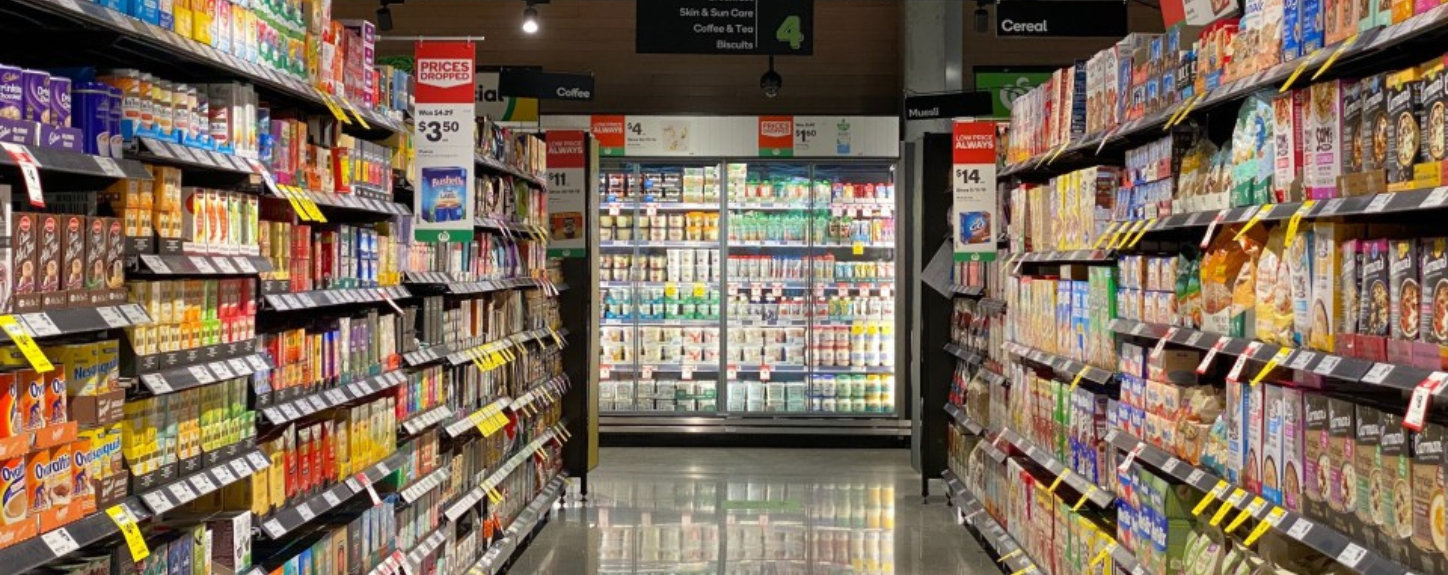As part of our #FoodFuture project we’re speaking to experts about how to best achieve more sustainable food systems. We spoke to Dietician Teri Lichtenstein from Foodbytes to look at the perceptions behind processed food and why we often overlook their crucial nutritional role.
The majority of our modern food supply and virtually everything we put in our mouths is processed to some degree – whether that be frozen, chopped, cleaned, blended, dehydrated, heated and more. Indeed, food processing is a spectrum, with various terms used to define the level of processing used.
Highly refined foods like yogurt, olive oil, and bread have many processing steps, and they don’t look anything like the original ingredients at the start of processing, yet all these foods are generally accepted as being healthy. Processed foods can be essential for human health. For example, iodized salt has helped people all over the world get the iodine their bodies need to function.
Lack of consensus
The point of tension lies in the concept of “food processing,” (universally recognised as playing a role in food security and sustainability), and “processed food” (most often associated with foods deemed to be unhealthy or un-natural). Add in the term “ultra-processed” and this is where things get interesting. The prefix ‘ultra’ means “beyond what is ordinary, proper or moderate; excessively or extremely”1. This definition suggests there is a norm for what is deemed a reasonable amount of processing, yet no such norm exists. There is also no distinction between ingredients and nutrients vs. processing, in the characterisation of “healthy food.”
Food processing and nutrition do not have a linear relationship
From a nutritional standpoint, processed and even some ultra-processed foods can provide key nutrients, with nutrients such as protein naturally retained throughout processing2, and others like B vitamins and iron may be added back if they are lost during processing. Fruits and vegetables that are quickly frozen after harvesting can retain the majority of vitamin C3 .Food processing of course also has drawbacks. Peeling outer layers of fruits and vegetables, refining whole grains removes plant nutrients and fibre, whilst heating or drying foods can destroy some vitamins and minerals. Although food manufacturers can add back nutrients, it is impossible to recreate the food in its original form. From the perspective of food science and technology however, processing and nutritional value do not have a linear relationship and these concepts need to be dissociated.
Nutritionists and health experts consistently align on recommendations that whole foods should comprise the majority of people’s diets, and consumption of highly processed foods should be limited. The challenge is the ambiguous use of the broad terms used to describe processed foods. This is often exacerbated by sensationalist media headlines and common classification criteria have been criticised as being inconsistent and confusing for consumers to understand4. In addition, most classification systems (e.g. NOVA) give very little weight, if any, to the nutrients and ingredients of the food and the ‘food matrix’ effect – the physical structure of the food and the associated impact on nutrient bio-availability5.
Critics of NOVA suggest the ‘ultra-processed’ term is too broad and therefore captures a vast array of foods within its parameters that may not be responsible for adverse health outcomes associated with over consumption of nutrient-poor ultra-processed foods6.
What should consumers consider when choosing processed foods?
Advice from the Harvard T.H. Chan’s School of Public Health suggests people should choose a processed food by reviewing its nutrition content and evaluating its long-term health impacts, noting that “an ultra-processed food that contains an unevenly high ratio of calories to nutrients may be considered unhealthy”2 .With this advice in mind, consumers seeking to reduce or replace a particular food in their diet with concern to health, should consider how the alternative compares nutritionally, as well as the overall role of processed and ultra-processed foods in their diets.
The role of nutrition stakeholders and the media
Nutrition professionals, the media and other stakeholders also need to take accountability for reducing confusion around processed foods and helping consumers make informed choices. When providing advice about diet and recommended food choices, it is important to consider that food choice is not the only factor that influences what people eat.
Food access, economic limitations, and the complexities of the social experience of eating all influence what we eat.
While consuming large quantities of undesirable nutrients, not getting enough of other nutrients, or eating certain types of foods regularly does influence health outcomes, the problem is one of the complexities of eating behaviours, not simply a problem of the food itself. For some, highly processed convenience foods may be the primary way to feed themselves and their families due to a lack of time or access. Instead of arguing over definitions of processed foods, perhaps we should redirect these energies to addressing barriers that limit access to less processed and fresh foods and work with industries, governments and other stakeholders to bring about real long term change to overcome these barriers.
Where to from here for processed foods?
Clarifying the underlying methods, meanings and rationales of classification is a first step towards standardisation of frameworks for more robust evidence development to inform public health and dietary guidelines. Ultimately, the best solution for humanity is to process our food to be more nutritious, longer-lasting, and sustainable.




